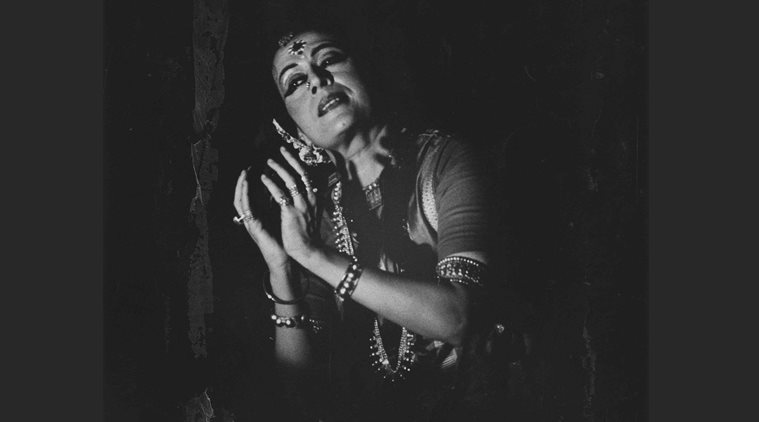‘The colour of art is not saffron or green, it’s gold’
In 2004, she was appointed chairperson of Sangeet Natak Akademi. However, she had to resign when a number of artistes protested against her “dictatorial” attitude.

In the last six decades, she has used dance forms such as Manipuri, Chhau and Bharatanatyam to address social issues, and mentored youngsters in a school that she started in the garage of her rented house in Delhi in 1977.
It was in 1986 when sitar maestro Pandit Ravi Shankar was nominated to the Rajya Sabha. The next representation in the Upper House of the Parliament from the field of performing arts has come almost four decades later. Last week, veteran classical dancer Sonal Mansingh was among the four eminent personalities chosen to represent their respective fields, the others being former MP Ram Shakal, RSS thinker Rakesh Sinha and Odisha sculptor Raghunath Mohapatra.
“It’s not for me to say, it’s for others to assess,” said the 74-year-old artiste of the nomination, a day after taking oath in Parliament. She adds, “It is a validation of art, culture and Indian tradition.” No sooner than she took the oath, she was asked if she would be attending Parliament or be an absentee member like some others. “I will be present whenever the session is on, not only to register my presence but also to observe, listen and learn,” she answered.
Born in Mumbai in 1944, Mansingh started learning Manipuri dance at the age of four. By the time she turned seven, she had begun classes in Bharatanatyam as well. In the last six decades, she has used dance forms such as Manipuri, Chhau and Bharatanatyam to address social issues, and mentored youngsters in a school that she started in the garage of her rented house in Delhi in 1977.
Born in Mumbai in 1944, Mansingh started learning Manipuri dance at the age of four. By the time she turned seven, she had begun classes in Bharatanatyam as well. In the last six decades, she has used dance forms such as Manipuri, Chhau and Bharatanatyam to address social issues, and mentored youngsters in a school that she started in the garage of her rented house in Delhi in 1977.
In 2004, she was appointed chairperson of Sangeet Natak Akademi. However, she had to resign when a number of artistes protested against her “dictatorial” attitude. Looking back, she now calls it “first big example of political interference in the arts” by the UPA government.
“What started at the time was very sad for the arts. Now, artistes are questioned if they are saffron or not,” says Mansingh. “To them, I want to say, the colour of art is not saffron or green, it’s gold,” she says. Real secularism, she adds, lies in the performing arts. “There may be left or right in theatre and literature, not in music and dance,” says Mansingh, a trustee of the Indira Gandhi National Centre for Arts and member of the Central Advisory Board on Culture.
“The whole colour palate of nature is so beautiful, every imaginable colour is there. Sun is saffron, and you can’t do anything about it. Rivers, ocean are blue. Art is like a rainbow, you can’t miss out any colour.” No wonder then that Indradhanush is among her major choreographic works, besides Manavatta, Devi Durga, Mera Bharat and Draupati.
Mansingh, who received the Padma Bhushan (1992) and Padma Vibhushan (2003) for her contribution to dance, says, “Dance is not just entertainment. It isn’t just naach-gaana. It’s all about what people take home when they leave the auditorium.” Currently, she is preparing for her inaugural speech in the Rajya Sabha. “I don’t know whether it will happen in this session or the next, but I should have something concrete to say,” she adds.
Mansingh, who received the Padma Bhushan (1992) and Padma Vibhushan (2003) for her contribution to dance, says, “Dance is not just entertainment. It isn’t just naach-gaana. It’s all about what people take home when they leave the auditorium.” Currently, she is preparing for her inaugural speech in the Rajya Sabha. “I don’t know whether it will happen in this session or the next, but I should have something concrete to say,” she adds.
In keeping with that, she plans to hold consultations with the art fraternity on a regular basis so that she can voice their issues in the House. But she has a fair idea on where she will begin. “In any country, patronage is a must for art and culture to flourish. There are major issues of art infrastructure in India, there are hardly any spaces which allow the artistes to put forward their best. But CSR only applies to sports and education, not in art and culture. This should change,” she adds.
For all the latest Lifestyle News, download Indian Express App






















No hay comentarios:
Publicar un comentario